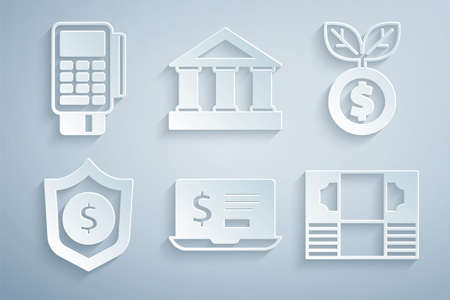Understanding Your Credit Card Debt
Before you can start building an effective monthly budget to pay off your credit card debt faster, it’s essential to clearly understand what you owe. This means taking a close look at each of your credit cards to see the full picture of your financial situation.
Analyze Your Credit Card Statements
Gather all your recent credit card statements—either online or paper copies. Review each statement carefully to find out the following details for every card:
- Total balance: The amount you currently owe on each credit card.
- Interest rate (APR): The annual percentage rate that determines how much interest you’re charged if you carry a balance.
- Minimum payment: The smallest amount you must pay each month to keep your account in good standing.
Create a Simple Credit Card Debt Overview Table
Organizing this information in a table makes it easier to compare and prioritize which debts to tackle first. Here’s an example of how you might set up your own table:
| Credit Card Name | Total Balance | Interest Rate (APR) | Minimum Payment |
|---|---|---|---|
| Card A | $2,500 | 19.99% | $75 |
| Card B | $1,200 | 15.49% | $35 |
| Card C | $800 | 24.99% | $25 |
Why These Details Matter
Knowing the total balances helps you see the big picture, while understanding interest rates allows you to identify which debts are costing you the most money over time. Minimum payments show the least you need to pay, but paying only this amount will extend repayment and increase interest costs. By analyzing these factors, you’ll be better prepared to build a budget that focuses on accelerating your debt repayment.
2. Setting Realistic Financial Goals
When you’re building a monthly budget to pay off credit card debt faster, it’s important to set realistic and achievable financial goals. This step will help you stay motivated and on track without feeling overwhelmed.
Determine Your Debt-Free Timeline
First, decide how quickly you want to be debt-free. Are you aiming to pay off your credit card in 6 months, a year, or longer? Setting a target date gives you a clear finish line and helps you break down your repayment plan into manageable steps.
How to Calculate Monthly Repayment Goals
Once you have your debt-free timeline, use the following approach:
- Total your current credit card balances.
- Divide the total by the number of months until your goal date.
- This gives you the minimum amount you need to pay each month to reach your goal.
Here’s an example table to help visualize your repayment targets:
| Total Credit Card Debt | Goal Timeline (Months) | Monthly Repayment Goal |
|---|---|---|
| $3,600 | 12 | $300 |
| $3,600 | 18 | $200 |
| $3,600 | 24 | $150 |
Tweak Your Targets as Needed
Your monthly budget might not always allow for your ideal repayment amount. If that’s the case, adjust your timeline or look for extra ways to boost your payments, like cutting back on non-essential spending or picking up a side gig. The key is to set goals that are challenging but still realistic based on your income and expenses.

3. Tracking Income and Essential Expenses
Before you can make real progress on paying off your credit card debt, you need a clear picture of your finances. The first step in building a monthly budget is to track all your income sources and essential expenses. This helps you understand exactly how much money you have available each month to put toward debt repayment.
List All Sources of Income
Start by writing down every source of income you receive regularly. This could include:
- Your salary or wages (after taxes)
- Freelance work or side gigs
- Child support or alimony
- Government benefits
- Any other regular payments
Example: Monthly Income Table
| Source | Amount ($) |
|---|---|
| Main job (after taxes) | 3,000 |
| Side hustle (Uber, DoorDash, etc.) | 500 |
| Child support | 400 |
| Total Monthly Income | 3,900 |
Categorize Your Essential Monthly Expenses
The next step is to make a list of all your fixed monthly expenses—these are the bills you must pay every month to keep your household running. Common categories include:
- Rent or mortgage payment
- Utilities (electricity, water, gas, trash)
- Groceries and household supplies
- Transportation (car payment, gas, public transit pass)
- Insurance (health, car, renter’s)
- Minimum payments on loans or credit cards
- Cell phone and internet service
- Childcare or school fees (if applicable)
Example: Monthly Essential Expenses Table
| Expense Category | Amount ($) |
|---|---|
| Rent | 1,200 |
| Utilities | 250 |
| Groceries & Household Supplies | 400 |
| Transportation (gas & insurance) | 300 |
| Health Insurance Premiums | 200 |
| Cell Phone & Internet Service | 120 |
| Total Fixed Expenses | 2,470 |
Know Your Available Cash Flow for Debt Repayment
Your available cash flow is simply your total income minus your total fixed monthly expenses. This number shows how much money you have left to allocate towards extra credit card payments or savings goals.
Quick Formula:
Total Monthly Income – Total Fixed Expenses = Available Cash Flow for Debt Repayment
This process gives you clarity and helps ensure you’re not overspending in any area. Once you know your available cash flow, you’ll be ready for the next steps in accelerating your credit card debt repayment plan.
4. Identifying Spend Areas to Cut Back
When youre working on a monthly budget to pay down your credit card debt faster, one of the most effective steps is figuring out where you can cut back. Pinpointing non-essential expenses gives you more cash to put toward those payments each month. Here’s how you can spot and trim extra spending without feeling like you’re missing out on life.
Common Non-Essential Spending Categories
Start by reviewing your bank and credit card statements for the past few months. Look for patterns in spending that aren’t essential to your day-to-day needs. Here are some typical categories where people tend to overspend:
| Category | Examples | Potential Monthly Savings |
|---|---|---|
| Dining Out & Takeout | Coffee shops, fast food, restaurants, delivery apps | $50 – $200+ |
| Subscriptions | Streaming services, magazines, apps, gym memberships | $10 – $100+ |
| Entertainment & Leisure | Movies, concerts, events, hobbies, shopping sprees | $25 – $150+ |
| Convenience Purchases | Bottled water, snacks at gas stations, impulse buys | $10 – $50+ |
How to Reduce Non-Essential Expenses
- Cook More at Home: Swap out restaurant meals for home-cooked ones. Even prepping lunch for work can make a big difference.
- Review Subscriptions: Check all your recurring charges—cancel anything you haven’t used in the last month or two.
- Set Entertainment Limits: Give yourself a reasonable monthly limit for fun activities so you can still enjoy life but stick to your plan.
- Avoid Impulse Purchases: Make a shopping list before heading to the store and avoid adding extras at checkout.
Reallocate Your Savings Toward Debt Repayment
The money you save from these cutbacks should go straight into your monthly credit card payments. This not only helps reduce your balance faster but also saves you money on interest in the long run.
5. Creating a Monthly Debt Repayment Plan
Building an effective monthly budget is a key step in speeding up your credit card debt repayment. It helps you clearly see where your money is going and gives you control over how much you can put toward paying down balances each month. Here’s how to create a practical plan that keeps you on track.
Step 1: List Your Income and Expenses
Start by writing down all sources of income and every monthly expense, including rent or mortgage, utilities, groceries, subscriptions, transportation, and minimum credit card payments. Use the table below to organize your information:
| Category | Amount ($) |
|---|---|
| Net Monthly Income | _________ |
| Rent/Mortgage | _________ |
| Utilities | _________ |
| Groceries | _________ |
| Transportation (Gas, Car Payment, etc.) | _________ |
| Subscriptions/Entertainment | _________ |
| Minimum Credit Card Payments | _________ |
| Total Expenses | _________ |
| Money Left for Extra Debt Payment | _________ |
Step 2: Prioritize Higher Credit Card Payments in Your Budget
If you have money left after covering essentials, commit as much of it as possible to your credit card debt. The more you pay above the minimum, the faster you’ll see progress. Consider cutting back on non-essential spending like streaming services or dining out to free up even more cash for your debt repayment plan.
Step 3: Choose Your Debt Repayment Strategy – Avalanche vs. Snowball Method
You have two popular strategies to pick from when deciding how to allocate extra payments:
| Method | How It Works |
|---|---|
| Avalanche Method | Focus extra payments on the card with the highest interest rate first while making minimum payments on others. Once that’s paid off, move to the next highest interest rate card. This method saves you the most money on interest. |
| Snowball Method | Tackle the card with the smallest balance first while making minimum payments elsewhere. After paying it off, roll that payment into the next smallest balance. This approach provides quick wins and motivation. |
Example Avalanche Plan:
- Card A: $4,000 at 22% APR (highest rate)
- Card B: $2,000 at 18% APR
- Card C: $800 at 15% APR
You’d pay extra toward Card A first while continuing minimum payments on Cards B and C.
Example Snowball Plan:
- Card C: $800 at 15% APR (smallest balance)
- Card B: $2,000 at 18% APR
- Card A: $4,000 at 22% APR
You’d pay extra toward Card C first for a quick win before moving on to larger balances.
Step 4: Automate Payments for Consistency
No matter which strategy you choose, consistency is key. Set up automatic payments through your bank or directly with your credit card companies so you never miss a due date. This not only helps build your credit but also reduces stress.
Step 5: Track Your Progress Each Month
Create a simple tracking system—either a spreadsheet or a budgeting app—to monitor your debt balances as they decrease. Celebrate small victories along the way; seeing progress will keep you motivated!
Your Practical Action Plan:
- Add up all monthly income and expenses using the provided table.
- Categorize wants vs needs and prioritize higher credit card payments in your budget.
- Select either the avalanche or snowball method based on what motivates you most.
- Set up automatic transfers for regular payments and extra debt payoff amounts.
- Review your progress every month and adjust your plan if needed.
This hands-on approach will help you stay organized, focused, and well on your way to crushing your credit card debt faster than ever before!
6. Monitoring Progress and Adjusting as Needed
Sticking to your budget is key when you’re trying to pay off credit card debt faster, but it’s just as important to regularly check how you’re doing and make changes when life throws you a curveball. Here’s how you can keep your plan on track:
Why Review Your Budget Each Month?
Your income or expenses might change from month to month—maybe you picked up some extra shifts at work, or maybe an unexpected car repair popped up. By reviewing your budget every month, you can catch these changes early and adjust your spending or debt payments before things get out of hand.
Monthly Budget Review Checklist
| Step | What to Do |
|---|---|
| 1. Compare Actual Spending to Budgeted Amounts | Look at your bank statements and credit card bills to see if you stayed within your limits for each category. |
| 2. Check Credit Card Balances | Note how much your balances have gone down this month. |
| 3. Update Income and Expenses | If you got a raise, lost hours at work, or had new expenses, update these numbers in your budget. |
| 4. Make Adjustments | If you spent more in one area, look for ways to cut back elsewhere. If you have extra money, consider putting more toward your debt payments. |
| 5. Set Next Month’s Goals | Decide how much you want to pay toward each card and set realistic goals based on any changes. |
When Should You Adjust Your Budget?
- Income Changes: Got a raise, started a side hustle, or lost hours? Update your budget so it matches what’s coming in now.
- New Expenses: Medical bills, car repairs, or school fees might pop up. Shift money from other categories if needed.
- Paid Off a Card: If you finish paying off one card, add that payment amount to another card or start saving for emergencies.
- Lifestyle Changes: Moving out, getting married, or adding family members? These all affect your monthly finances—update accordingly!
Sample Adjustment Table for Unexpected Events
| Event | Budget Impact | Possible Adjustment |
|---|---|---|
| Car Repair ($400) | $400 expense not planned for this month | Reduce dining out and entertainment by $200 each; temporarily lower extra debt payment by $200 this month only. |
| Overtime Pay (+$300) | $300 extra income this month | Add $200 to credit card payment; save $100 for emergencies. |
| Cable Bill Increase (+$25/month) | $25 higher monthly expense going forward | Cut subscription service or limit takeout meals to offset new cost. |
The Power of Regular Reviews
The more often you review and adjust your budget, the easier it is to keep moving toward your goal of becoming debt-free. Small tweaks every month can add up to big progress over time—just remember that flexibility is part of the process!


